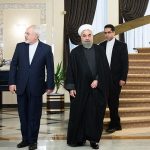by Greg Thielmann
Iran’s binge of short- and medium-range ballistic missile launches on March 8 and 9 garnered considerable attention in the press and in American political circles. These provocative launches, which coincided with a visit to Israel by Vice President Joe Biden, were roundly condemned by U.S. politicians in both parties.
It may be more revealing, however, to focus on two Iranian missile types that were not launched last week—launches that have been expected for years. These systems, the Simorgh space rocket and the Sejjil-2 medium-range ballistic missile (MRBM), represent aspects of missile development that have been of most acute concern to those who worry about the threat that future long-range Iranian missiles could pose to Europe and the United States.
The missiles launched last week have been identified as the 750 kilometer-range Qiam and the 1,600 kilometer-range Ghadr-1. Both are single-stage, liquid-fueled systems. Neither demonstrated a new capability; neither system is prohibited by the Iran nuclear deal.
The two Iranian MRBMs launched in the fall clearly violated UN Security Council Resolution 1929, then in effect, which banned any “nuclear-capable ballistic missile activities” by Iran. This language was commonly understood as a reference to the inherent range/payload capabilities of any missile that could serve as a potential nuclear weapons delivery vehicle. For example, the Missile Technology Control Regime sets forth as criterion the ballistic missile’s ability to deliver a 500 kilogram warhead to a distance of at least 300 kilometers.
However the UN Security Council restrictions on Iran’s ballistic missile activities were changed in January 2016, following the adoption of the Iran nuclear deal. Security Council Resolution 2231, which substituted for 1929, “calls upon” Iran not to conduct launches of missiles that are “designed to be nuclear capable” [emphasis added]—a change all Security Council members understood would give Tehran a stronger claim to legitimacy for its continuing launches of space rockets and conventionally-tipped ballistic missiles.
U.S. Representative to the United Nations Samantha Powers contended on March 14 that the missile technology Iran used “is inherently capable of delivering nuclear weapons and thus [is] inherently defying Resolution 2231.” Powers’ logic unfortunately ignores the Security Council’s unanimous agreement to add language that implies nuclear weapons intent must now be established in assessing the design of any missile launched by Iran–an even higher bar in light of Iran’s acceptance of stringent limits on its nuclear program.
Moreover, the March 2016 launches provide scant clues on the status of Iran’s missile programs in general and no insight into whether or not an Iranian long-range missile capability will emerge in the next few years. Moreover, the launches do not constitute evidence that Iran is interested in developing a nuclear weapons capability for its ballistic missiles.
One vector of concern is Iran’s declared intention to develop a large space rocket, the Simorgh, which would be a more capable system for launching satellites than the Safir rocket Iran had been using. When Iran rolled out a mock-up of the two-stage Simorgh six years ago, many saw the system as a “cover” for the country developing an intercontinental ballistic missile (ICBM). This interpretation was encouraged by the reluctance of U.S. officials to change their projection that an Iranian ICBM could emerge by 2015.
When evidence of a long-range military missile flight test in 2015 failed to appear, the date was not revised in intelligence information provided to the public, but the rationale was subtly altered. The estimate of Iran launching an ICBM by 2015 was increasingly justified by referencing Iran’s plans to soon launch the Simorgh space rocket.
Iran’s government has announced the maiden launch of the Simorgh several times since 2010, most recently in a window ending on March 10, 2016, but it has not yet happened. The repeated postponements of the Simorgh launch should not be interpreted as a lack of interest in, or resources for, Iran’s space program. Iran’s four successful satellite launches and its construction of an elaborate new facility at the Khomeinei Space Center in Semnan provide convincing evidence of the seriousness of its efforts.
There are reasons, however, to question assumptions about the direct applicability of the Simorgh space rocket for ICBM use. If, as appears to be the case, the Simorgh’s design is optimized for placing satellites in orbit rather than delivering warheads to the earth, converting it to an ICBM would not be a trivial endeavor. Satellite launches are not sufficient for mastering the challenges of ensuring that a warhead can safely re-enter the atmosphere and achieve sufficient accuracy in reaching its target.
Even if the space rocket were converted into an ICBM and Iran had a nuclear warhead, the Simorgh would not be able to deliver such a payload to the United States, more than 9,000 kilometers away. Whatever the validity of concerns that Iran intends to apply its space program experiences to military ends, the six-year launch delay has played a role in the U.S. military finally moving its projections of an Iranian ICBM capability to 2020, at the earliest.
Another vector of concern is Iran’s work on larger solid-fueled missiles, starting with the Sejjil-2 MRBM, and possibly leading to longer-range systems, which could be the basis for a more formidable ICBM down the road. Five years ago, Iran completed its fifth launch of the Sejjil-2, a two-stage, solid-fueled system, superior in range and survivability to the liquid-fuel Shahab-3 and Ghadr-1 MRBMs then in Iran’s operational inventory.
All of Iran’s medium-range missile types have the range/payload characteristics necessary for use as nuclear delivery vehicles, but the Sejjil-2 would be particularly well suited for threatening Iran’s enemies in the region with nuclear strikes. The Sejjil’s range (2,000+ kilometers) would give Iran much greater flexibility in locations for deployment inside the country. Also, because the Sejjil uses solid fuel, it would require less time (and involve fewer support vehicles) for launch preparation and rapid relocation of the launcher, further complicating enemy attempts to preempt the system or destroy the launchers before they could be reloaded.
However, opinion is divided on whether the Sejjil-2 is operational. Sejjil missiles have been subsequently displayed in parades and filmed in underground tunnels, but no further developmental flight tests or operational training launches have occurred since 2011.
The two Emad MRBMs launched last fall and the two Ghadr-1 MRBMs launched last week were all liquid-fuel Shahab-3 derivatives. The five-year absence of Sejjil flight activity and Iran’s use of less capable delivery vehicles as the platform for testing MRBM accuracy improvements raise questions about the Sejjill-2’s status.
The long wait for a Simorgh rocket launch and the long hiatus in the series of Sejjil-2 launches could reflect significant technical obstacles in Iran procuring critical materials, serious developmental challenges, or shifting political priorities among Iran’s leadership.
Whatever the explanation, the absence of these events deserves at least as much attention and exposition as the “more-of-the-same” launches depicted in last week’s headlines. Iran’s failure to achieve developmental milestones in its rocket and missile programs should have real implications for U.S. missile defense and arms control policies. But the failure needs first to be acknowledged and analyzed.
Greg Thielmann is a senior fellow of the Arms Control Association. This article is an updated version of an Arms Control Now blogpost. Photo courtesy of ISNA.





